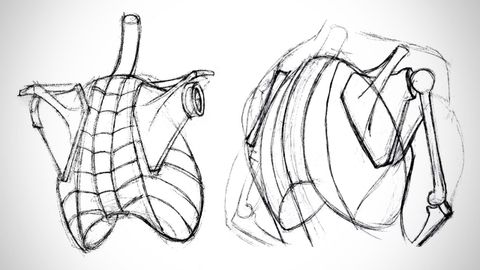
Subtitles & vocabulary
Anatomy Critiques - The Shoulder Bones
00
vulvul posted on 2015/09/27Save
Video vocabulary
draw
US /drɔ/
・
UK /drɔ:/
- Transitive Verb
- To attract attention to someone or something
- To influence a person's involvement in something
- Noun (Countable/Uncountable)
- Something that attracts people to visit a place
- A lottery or prize
A1TOEIC
More photo
US /ˈfoʊtoʊ/
・
UK /ˈfəʊtəʊ/
- Noun (Countable/Uncountable)
- Short for photograph; a picture taken by a camera
- The art or practice of taking photographs
- Transitive Verb
- To record on photographic film
A1TOEIC
More bottom
US /ˈbɑtəm/
・
UK /'bɒtəm/
- Noun
- The part of your body you sit on
- Lowest position, often in a company or contest
- Verb (Transitive/Intransitive)
- To hit the lowest part of something
- To provide with a bottom.
A2TOEIC
More show
US /ʃo/
・
UK /ʃəʊ/
- Verb (Transitive/Intransitive)
- To be easily seen or displayed
- To display your emotions or feelings
- Noun
- False display of love, emotion or action
- An event for displaying or promoting goods
A1
More Use Energy
Unlock All Vocabulary
Unlock pronunciation, explanations, and filters
